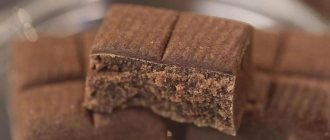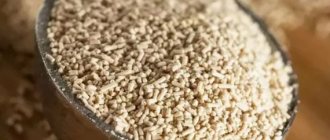Pharmacy shelves are crowded with a variety of vasoconstrictor drugs, advertising slogans promise to get rid of the runny nose, restore freedom of breathing and sense of smell. Annual sales of vasoconstrictor drugs in Russia amount to hundreds of millions of packages, and the profit from their sale is tens of billions of rubles. Let's find out whether these over-the-counter medications are so harmless and are they really necessary for us in everyday life?
Vasoconstrictor drugs (syn.: decongestants, vasoconstrictors, simatomimetics) have been widely used for many years in the treatment of diseases of the nose and paranasal sinuses. We will talk about those that are used topically, that is, in the form of nasal drops or aerosols.
Sympathomimetics are one of the most ancient drugs used in medicine. Ephedrine has been known as the active ingredient in the ancient Chinese medicine Ma Huang for over 5,000 years. Another powerful vasoconstrictor, cocaine, has been used for more than a hundred years to anesthetize and anemize the mucous membrane of the respiratory tract. Interestingly, naphazoline (the first representative of the chemical group of imidazolines, which includes most of the currently known topical decongestants) was synthesized by the German chemist Adolf Sonn in Nazi Germany. Namely, at the end of the thirties of the twentieth century in Koenigsberg. Naphazoline is a short-acting vasoconstrictor that most often causes unwanted side effects and complications. By the way, the first reports of the so-called “naphazoline addiction” appeared in medical journals very soon, already in the early forties, first in Germany and soon in Canada. Later, safer and more effective vasoconstrictors were synthesized - oxymetazoline, xylometazoline, tetrizoline, etc.
Mechanism of action. Vasoconstrictor drugs, as their name implies, cause narrowing (spasm) of blood vessels by acting on receptors in the vascular wall. In the nasal cavity, there are areas, mainly the inferior turbinates, where rich vascular plexuses are located under the mucous membrane. Decongestants, when they enter the nasal mucosa, constrict the vessels in these plexuses and the inferior turbinates decrease in size. At the same time, the lumen of the nasal cavity increases, the volume of air passing through the nose increases, and, accordingly, nasal breathing improves.
Local vasoconstrictor drugs, which are used to improve nasal breathing, are divided into two main groups, depending on which receptors of the vascular wall they act on. Those that act on α1-adrenergic receptors have a milder and shorter-lasting effect (less than 2 hours). The second group of drugs selectively acts on α2-adrenergic receptors, their vasoconstrictor effect is more pronounced (approximately 2 times higher than that of the previous group), the vasoconstrictor effect lasts longer (up to 8 hours). This group of drugs is mainly used - imidazoline derivatives, the earliest of which is naphazoline. The table shows both groups of decongestants with trade names.
CLASSIFICATION OF TOPICAL NASAL DECONGESTANTS
(after Malm L., Änggard A., 1993, with modifications)
| Mechanism of action | INN | Trade names |
| α1-adrenergic agonist | Phenylephrine hydrochloride | Vibracil, Adrianol, Nazol Baby, Nazol Kids |
| α2-adrenergic agonists | Xylometazoline | Afrin, Brizolin, Galazolin, Dlynos, Ximelin, Xylen, Olint, Otrivin, Rhinonorm, Rinostop, Tizin Xylo, Farmazolin |
| Oxymetazoline | Leconil, Nazivin, Nazol, Fazin | |
| Naphazoline | Nafazol-Hemofarm, Naphthyzin, Privin, Sanorin | |
| Indanazoline | Farial | |
| Tetrizoline | Tizin |
What do you need to remember?
Vasoconstrictor drops (Naphthyzin, Nazivin, Tizin, Xymelin, Afrin, Snoop, etc.) are used as a symptomatic remedy for the treatment of a runny nose. 1-2 doses allow you to relieve swelling of the mucous membrane for several hours and significantly slow down the formation of mucus, thereby relieving the symptoms of rhinitis.
Remember!
- There is no therapeutic effect in these drugs.
- The duration of vasoconstrictor therapy should not exceed 5-7 days; if a runny nose and nasal congestion last longer, you should urgently consult a specialist.
- Long-term and uncontrolled use of vasoconstrictor drops leads to addiction, the mucous membrane stops working correctly (scientifically, the nasal cycle is disrupted), and without the next “dose,” the vessels stop contracting on their own.
Indications
Vasoconstrictors effectively improve nasal breathing in all categories of patients, regardless of the cause of the disease. They work equally well for allergic, infectious and vasomotor rhinitis. It has been proven that the administration of decongestants reduces the duration of an acute runny nose by a third - from 6 to 4 days. For allergic rhinitis, the administration of decongestants in a short course (no more than 10 days) may also be justified. By reducing swelling of the nasal mucosa, they allow antiallergic drugs (topical intranasal corticosteroids and antihistamines) to penetrate more deeply. Decongestants are often prescribed situationally, for example, during air travel in persons with rhinitis or sinusitis to prevent otitis media. Or in acute otitis media to restore the function of the auditory tube. However, this practice has not yet received scientific confirmation. Apart from restoring nasal breathing, these drugs have no effect on other symptoms of rhinitis: they do not reduce the number of sneezes, and experimental studies in animals show that when treated with vasoconstrictors, the amount of nasal discharge even increases.
2.Mechanism of action
Decongestants include mediator substances (intermediaries) that can cause a reflex increase in the concentration of certain hormones in a local area of the mucous membrane. By “certain hormones” we mean adrenaline and norepinephrine, the so-called. hormones of fear and wakefulness, the natural role of which is to sharply increase vascular tone in a critical, dangerous situation, narrow the lumen, increase blood pressure, “accelerate” the heart rate and simultaneously dilate the blood vessels of the brain, as well as suppress pain and prevent hypovolemic shock in case of severe trauma. This biochemical mechanism, developed by evolution, is designed, as necessary, to transfer the vital activity of the body into a forced mode (short-term, since no fast and the furious, by definition, can last long without self-destruction of the system), ensuring the fastest and coolest reaction with a “clear head” - which, of course, increases chances of survival in a hunting situation, sudden natural disaster, attack by a wild animal or a hostile tribe.
Drugs that stimulate the reflex secretion of these hormones due to artificial stimulation of adrenergic receptors, when applied topically, lead to the so-called. anemization: the amount of blood in the capillaries sharply decreases, the mucous membrane turns pale (inflammatory hyperemia goes away, i.e. redness due to a rush of blood), “falls” in volume; swelling is reduced very quickly, literally before our eyes.
To date, decongestants have been developed with both immediate and short-term action, as well as relative prolongation, the effect of which lasts quite a long time.
Visit our Otolaryngology (ENT) page
Side effects
Most vasoconstrictor drugs are over-the-counter drugs—patients usually buy them without consulting a doctor. Moreover, patients often use these drugs despite doctor's warnings. However, decongestants can cause serious side effects.
Effects on the cardiovascular system
Patients often note that the use of vasoconstrictor drugs causes a deterioration in their general condition, headache, palpitations, etc. Reports in the literature also suggest that long-term, and sometimes even situational, use of decongestants, primarily naphazoline, and to a lesser extent oxymetazoline, may be accompanied by headache caused by segmental spasm of cerebral vessels, and even lead to ischemic and hemorrhagic strokes brain.
Effect on the vascular system of the nasal cavity
All topical vasoconstrictor drugs are, to one degree or another, capable of causing the development of rebound syndrome. Long-term (more than 10 days) use of topical vasoconstrictor drugs causes severe swelling of the nasal mucosa, leading to its irreversible changes and the occurrence of drug-induced rhinitis.
Short courses of treatment with topical decongestants, such as oxymetazoline and xylometazoline, do not lead to any significant functional and morphological changes in the nasal mucosa. However, in individuals with pre-existing nasal hyperreactivity (vasomotor rhinitis, vegetative-vascular dystonia), even a short-term course of treatment with nasal decongestants can lead to the formation of persistent drug dependence.
Effect on the nasal mucosa
Experimental studies have shown that the use of Naphthyzin for 6 months leads to polypous changes in the nasal mucosa, slowing down the movement of cilia and a complete loss of the protective function of the nasal mucosa.
Systemic toxicity
The systemic toxic effect of vasoconstrictors most often manifests itself in childhood. Decongestants should be administered with particular caution to children under 2 years of age because the current interval between therapeutic and toxic doses in this age group is short. Among all nasal decongestants, short-acting imidazoline derivatives (in particular, naphazoline) have the most pronounced undesirable topical and systemic effects. Poisoning with naphazoline drugs is one of the most common reasons for hospitalization of children in toxicology departments. The reasons for the development of a systemic toxic effect in children are exceeding a single dose and frequency of taking drugs, the use of drugs with a concentration adapted for older age, non-standardized methods of using decongestants, such as rinsing the nose by moving a decongestant solution, and even taking a decongestant solution orally.
In many countries, naphazoline preparations are not recommended at all for use in pediatric practice. In Russia, its use is permitted in children over 2 years of age, but it is emphasized that between the ages of 2 and 6 years, a 0.025% solution of naphazoline should be used. However, in practice, implementation of these recommendations is problematic, since official solutions of naphazoline are produced only in 0.05% and 0.1% concentrations. Considering this, the use of naphazoline and its derivatives in young children and preschoolers is inappropriate.
There is no information about the teratogenic effect of topical nasal decongestants, but due to the increased susceptibility of pregnant women to the development of tachyphylaxis syndrome, the use of vasoconstrictor drugs in them should be limited to the minimum possible doses and timing.
1.General information
Vasoconstrictors in medical language have many special names and synonyms: decongestants, anticongestants, sympathomimetics, vasoconstrictors, alpha1-, alpha2- and alpha-beta-adrenergic agonists (based on their topical effect on certain groups of receptors). Substances with a vasoconstrictor effect have been used since time immemorial: there is evidence that the first empirical findings of this kind were made by ancient healers (in particular, in Indochina) over five thousand years ago.
Today, against the backdrop of the well-known revolutionary successes of pharmacology, decongestants from a simple, convenient, inexpensive, effective medicine are increasingly turning into another global health problem associated with the use of drugs - a problem almost as serious as the trafficking of narcotic analgesics or the uncontrolled use of antibiotics.
This issue is given unflagging attention by all professional associations of ENT doctors around the globe without exception; a lot of educational and popular science materials are published; specialists provide explanations on all existing information platforms and platforms.
Certain shifts towards normalization are evident, the level of awareness (and responsibility) of the population is gradually increasing, but it has not yet been possible to radically improve the situation.
Let's try to understand the essence of the problem: what vasoconstrictor drops are, how they work, what are the indications, contraindications and side effects.
A must read! Help with treatment and hospitalization!
How to reduce the risk of side effects
An important role is played by the choice of the form of release of the drug, with the most unsuccessful form being nasal drops. In the absence of a dispenser, simply infusing the drug with a pipette does not provide any way to control the amount of drug introduced into the nasal cavity, since most of it immediately enters the nasopharynx and is swallowed. This not only reduces the effectiveness of the drug, but also significantly increases the risk of systemic side effects. Studies have shown that xylometazoline metered spray with a pump is significantly more effective at improving nasal breathing than regular spray and drops.
The concentration of the solution used is equally important. Studies have shown that 0.1% and 0.05% solutions of xylometazoline have approximately the same vasoconstrictor effect, so it is preferable to start treatment with a lower concentration of the drug (intended for children) and only if its effectiveness is insufficient, switch to the standard adult form.
MEDICATIONS
The barrier function in medicinal products is performed by the substances that make up their ointment or gel base. In addition, intranasal medications also contain active ingredients: dioxotetrahydroxytetrahydronaphthalene (“Oksolin”, nasal ointment 0.25%), interferon alpha-2b (“Viferon”, ointment and gel for external and local use; “Infagel” gel for external and local use). However, the effectiveness of their use as declared antiviral agents does not have a sufficient scientific basis.
| Trade name | Excipients | Active ingredients | With caution / Contraindications |
| Oksolin, nasal ointment 0.25% | Liquid paraffin (vaseline oil), petroleum jelly | Dioxotetrahydroxytetrahydronaphthalene | With caution during pregnancy, breastfeeding, contraindication - children under 2 years of age |
| Viferon, gel for external and local use | Alpha tocopherol acetate, methionine, benzoic acid, citric acid monohydrate, sodium tetraborate decahydrate, sodium chloride, human albumin, distilled glycerin (glycerol), sodium carmellose, ethanol 95%, purified water | Interferon alpha-2b human recombinant | Pregnancy and breastfeeding are not a contraindication for use due to the very low absorption of components; use in newborns is possible |
| Viferon, ointment for external and local use | Alpha tocopherol acetate, lanolin anhydrous, medical petrolatum, peach oil, calcium pantothenate, sodium benzoate, human albumin, sodium acetate trihydrate, sodium chloride, disodium edetate dihydrate, purified water | Interferon alpha-2b human recombinant | Possible use during pregnancy and breastfeeding due to very low absorption of components, contraindication - children under 1 year of age |
| Infagel, gel for external and local use | Aluminum hydroxide, polyvinyl alcohol, purified water | Interferon alpha-2b recombinant | Contraindicated for persons suffering from allergic diseases in the acute stage |











